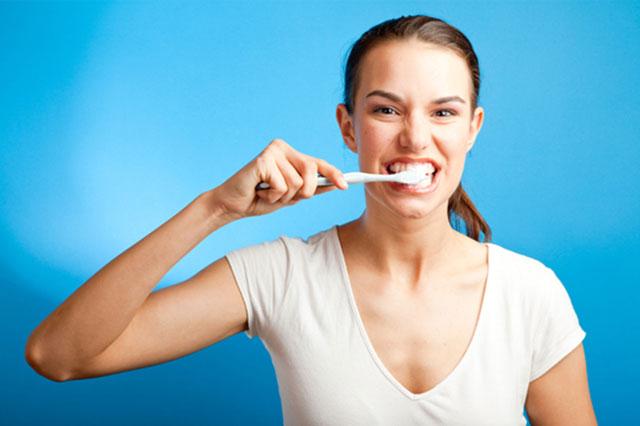You are here
Marathon runners get boost from bacteria in their guts
By Los Angeles Times (TNS) - Jul 02,2019 - Last updated at Jul 02,2019

Photo courtesy of runnersworld.com
The secret to a healthier life may lie in the guts of elite athletes.
Scientists who studied marathon runners discovered a type of bacteria that flourished in their digestive tracts. These Veillonella bacteria produce a molecule that helps increase exercise endurance.
The results, published in the journal Nature Medicine, could someday change the way we work out, said microbiologist George Weinstock from the Jackson Laboratory in Farmington, Conn.
“It starts to build the case that someday we may be able to take a Veillonella probiotic just before we are going to exercise, and we’ll be able to exercise more” said Weinstock, who wasn’t involved in the study.
Our bodies are teeming with microbes, helping us digest the food we eat and providing us with nutrients that we can’t make ourselves. Studies of these microbes — collectively known as the microbiome — have led to insights into diseases ranging from obesity to arthritis.
Previous research has found that athletes have a very different composition of microbes within their guts compared to non-athletes, but it’s not yet clear how those differences contribute to an athlete’s health.
“It’s the notion of mining the biology of super-healthy people and translating that into nutritional interventions for everyone else,” said study leader Jonathan Scheiman, who began studying the microbiomes of athletes while working at Harvard’s Wyss Institute for Biologically Inspired Engineering.
Almost every day for a week before and after the 2015 Boston Marathon, the Harvard researchers collected stool samples from 15 runners entered in the race as well as from 10 non-athletes, who served as controls. Those samples allowed researchers to see what kinds of microbes were inhabiting subjects’ guts.
When they compared the abundance of the different species of bacteria within those samples, one group in particular jumped out at them.
“We found this one bacterial genus, Veillonella, that was not only in higher abundance in athletes compared to controls, but almost immediately after the marathon there’s this spike in abundance,” Scheiman said.
What was especially intriguing about these bacteria was their appetite for a molecule called lactate.
This discovery “was kind of a lightbulb moment because lactate is a metabolite that accumulates in the blood after strenuous exercise”, Scheiman said. “When your ability to utilise it gets outpaced by your ability to produce it, it then starts to accumulate in the blood, and it tends to be a marker of fatigue.”
This connection between Veillonella, lactate, and exercise prompted the researchers to wonder whether giving Veillonella to mice might affect their endurance.
So they isolated a sample of the species Veillonella atypica from one of the marathon runners and administered it to 16 mice. They also gave Lactobacillus bulgaricus, another bacterium that does not eat lactate, to 16 other mice. Then they had all the animals run on a treadmill until they collapsed in exhaustion.
Sure enough, the mice given Veillonella ran 13 per cent longer than mice given the microbe that could not eat lactate.
The results prompted Scheiman and some of his Harvard colleagues to launch a biotech start-up called FitBiomics to see if they could turn their discovery into a suite of products. Scheiman is now the chief executive of the New York City-based company.
This 13 per cent increase “might sound not impressive”, said senior author Aleksandar Kostic, a microbiologist at Harvard Medical School who co-founded FitBiomics. “But I think any endurance athlete or any athlete in general will tell you that a 13 per cent increase is pretty significant.”
Lactate is produced in the muscles and travels through the bloodstream to the liver, where it is converted into glucose to fuel exercise. But the researchers wondered how it made its way into the gut, where the Veillonella bacteria were waiting to break it down.
To find out, they tagged lactate molecules with a radioactive marker and injected them into the tails of four mice. They found that a portion of the labelled lactate molecules moved from the bloodstream into the liver as expected, but a portion also travelled directly into the gut.
While a few groups of bacteria in the gut are able to eat lactate, Veillonella is one of the only groups that can convert lactate into molecules called short-chain fatty acids.
“Short-chain fatty acids are typically a hallmark of healthy guts,” Scheiman said. “They have all sorts of cool properties. They’re anti-inflammatory. They can serve as energy sources for cells in the body.”
The one produced by Veillonella is propionate. That made the researchers wonder whether they could boost the endurance of mice by skipping the bacteria step and introducing propionate directly into their colons via a standard enema.
It worked. Mice given propionate ran just as long as mice given Veillonella. The researchers saw this as an indication that the propionate produced by Veillonella, not the Veillonella itself, was allowing the mice to run for a longer time.
Clinical trials will be needed to figure out what exactly propionate is doing in the body that enables a runner to exercise for longer. And not just for the sake of finishing the Boston Marathon in less time.
“The ability to do meaningful exercise is strongly correlated with a decrease in risk of chronic diseases such as cardiovascular diseases and diabetes,” Kostic said. “If it’s possible that we can increase a person’s exercise capacity by making a simple modification to their microbiome, perhaps by introducing Veillonella as a probiotic, this could have a potentially medically important impact in reducing risk of chronic diseases.”
Paul Cotter, a molecular microbiologist from Ireland’s University College Cork who was not involved in the work, said the study made a convincing case that Veillonella boosts propionate, and that propionate in turn boosts endurance.
“It’s a very nice study,” said Cotter, who didn’t work on the project. But he cautioned that a probiotic form of the bacterium won’t be available to the public for quite a while. “You’d have to establish its safety, and go through a lot of trials before you could do that.”
Scheiman agreed that it could take a couple of years or so. “Certainly it will take some time to develop commercially and to move into human studies.”
And that’s just one type of bacteria they found in marathon runners. Schieman said he’s eager to search for other bacteria in our guts that can improve human fitness.
“What if we look at super-strong athletes or super-fast athletes?” he said. “What are all the sorts of beneficial bacteria we can discover and then look to translate to human health?”
Weinstock, of Jackson Laboratory, said that’s the right question to ask.
“We really need to learn a lot more about the microbes before we’re going to understand how we function,” he said.
“Imagine, someday we can take a pill, and it makes us an elite athlete.”
Related Articles
British scientists have developed an ingredient that makes foods more filling, and say initial tests in overweight people showed that it helped prevent them gaining more weight.
Mice that were raised in a sterile environment or given antibiotics early in life lacked a common gut bacteria that appears to prevent food allergies, US researchers recently said.
Triclosan, an antimicrobial agent found in toys, toothpaste, cosmetics and more than 2,000 other consumer products, has been found to wreak















